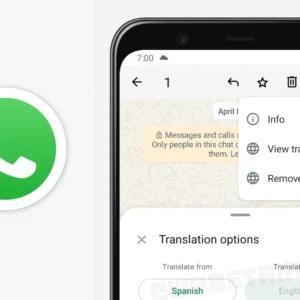On October 20, 2025, Amazon Web Services (AWS) — one of the largest cloud computing providers in the world — experienced a major outage that disrupted websites and digital services across the globe. This event, known as the AWS global cloud outage response incident, highlighted how dependent our online systems have become on a handful of major cloud players and how one failure can affect millions of people at once.
What happened during the outage
The AWS outage began early in the morning in the US-East-1 (Northern Virginia) region, which is one of the company’s most active data center zones. AWS first reported “increased error rates and latencies” in its core services, particularly those linked to its DynamoDB API and DNS (Domain Name System). The failure in DNS resolution caused a ripple effect, making many dependent services slow or unavailable.
Large-scale apps such as Snapchat, Slack, Fortnite, and Spotify faced disruptions. Even banking apps in the UK and Europe reported downtime, leaving users unable to make transactions. Several education, gaming, and streaming platforms were also affected as they rely heavily on AWS servers for hosting and data storage.
According to reports, engineers identified the problem and gradually restored services throughout the day. By the evening, AWS announced that operations had returned to normal, though some systems continued to process backlogs for a few hours.
Global impact and business concerns
The outage’s global scale was significant. Millions of users reported difficulties accessing their favorite apps and websites. Outage-tracking platforms such as Downdetector showed spikes in complaints across multiple countries.
In the United Kingdom, thousands of users were locked out of banking apps and government portals. In the United States, popular consumer services such as online shopping platforms and cloud-hosted tools went offline temporarily. Since many third-party apps indirectly depend on AWS — even if they don’t use it directly — the issue became a domino effect across industries.
For businesses that depend on cloud infrastructure, this outage became a wake-up call. The AWS global cloud outage response showed how a single malfunction in one region could disrupt global operations, highlighting the risks of centralized dependency. Many organizations realized they had no immediate backup plan if their cloud provider went down.
Lessons for companies and developers
Technology experts believe this incident should encourage businesses to rethink their cloud strategies. One of the strongest recommendations that emerged from the AWS global cloud outage response is the adoption of multi-cloud or hybrid-cloud strategies. This means distributing workloads across multiple providers — such as Google Cloud, Microsoft Azure, or regional cloud services — instead of relying on one.
Here are some key takeaways for companies:
- Avoid single-region dependence: Hosting all operations in one data center region can create a bottleneck if that region fails.
- Add redundancy and backups: Always maintain a secondary system in another region or with another provider.
- Regularly test failover systems: Many companies have backup plans but rarely test them, which leads to slow recovery when an outage happens.
- Map critical dependencies: Understand which backend services your application relies on — including APIs, DNS, or storage systems.
Governments and policymakers are also taking note. Some countries, including the UK, have begun discussing whether major cloud providers should be considered critical national infrastructure, similar to electricity or water supply. This would mean greater monitoring and stricter requirements for uptime and reliability.
What users can learn from it
For everyday users, outages like these serve as reminders of how complex the internet ecosystem is. When popular apps suddenly stop working, it’s not always a problem with your phone or internet connection — sometimes the issue lies deep in the infrastructure.
During large-scale outages, it’s helpful to:
- Check the official status pages of apps or cloud providers before troubleshooting locally.
- Avoid sharing sensitive data or retrying failed payments during unstable service periods.
- Follow verified communication channels to stay updated on recovery progress.
Even though AWS restored its services by evening, the outage revealed how deeply integrated it is in our daily lives. From digital payments to communication tools and entertainment platforms, the company’s cloud backbone powers much of the modern internet.
Broader discussion in the tech world
Following this incident, the tech community has reignited debates around cloud concentration risks. Experts argue that having too few cloud providers controlling most of the world’s online services is risky. If one suffers a disruption, millions of businesses and individuals are immediately affected.
Some companies are now exploring edge computing and regional cloud services as alternatives to reduce dependency. Others are working on tools that automatically shift workloads between providers during outages. These developments aim to make the global internet infrastructure more resilient.
The AWS global cloud outage response also sparked conversations about accountability. Should large providers face stricter regulations or transparency requirements when failures occur? Many industry analysts believe more public reporting and government oversight are needed to ensure such incidents are minimized in the future.
Final thoughts
The October 20 AWS outage will be remembered as one of the largest in recent years. It not only caused global inconvenience but also exposed how fragile the internet can be when too much of it depends on one provider.
While AWS has since taken measures to strengthen its systems, businesses and governments are now more aware of the risks involved. The key lesson is clear — diversification and preparation are essential for a stable digital future.
External References:
- The Verge: Major AWS outage took down Fortnite, Alexa, Snapchat, and more
- The Guardian: AWS outage shows internet users at mercy of too few providers
- AP News: Massive Amazon cloud outage resolved after disrupting global services
- ThousandEyes Blog: AWS Outage Analysis, October 2025









